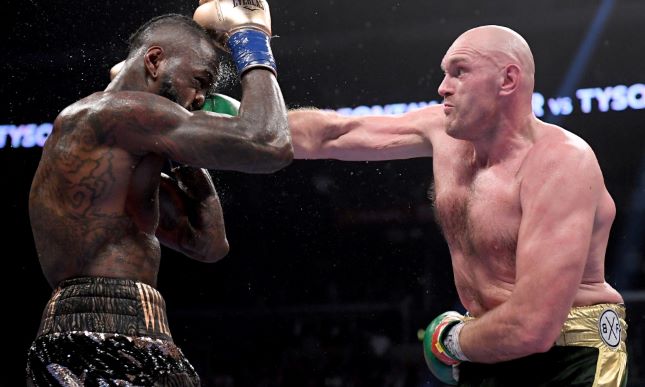By: Mario Mungia
The sport of boxing has had to operate with a certain cloud of suspicion over its head as of late. Despite the attempts to correct some of the sport’s more dated allegations — the introduction of Commissions and the Ali Act come to mind– boxing has maintained, to a degree, a reputation for being a dirty sport where cheating often goes unchecked.
Some of the blame can be credited to Hollywood’s portrayal of the darker days, but a lot of the blame can be placed on the bad actors throughout the history of boxing. The kind of bad actors that took full advantage of the fight game when it lacked oversight—allowing for such interference.
It is general knowledge that the Mob once operated with impunity in the sport. Pop culture often associates specific instances of cheating — the rigging of fight outcomes and tampered with gloves and water bottles – with the everyday happenings inside the sport. How many times have you heard a casual fight fan say that a particular fighter “took a dive?”
Thankfully, these examples are not common occurrences. I do not think I would watch boxing if I genuinely believed a significant portion of fights were “fixed” in one way or another.
Of course, there are plenty of real examples of incompetence which invite the idea that boxing is unfair — from poor judging that favors the “in-house fighter” to inexplicable decision making on the part of a referee — there are enough real problems in the fight game and it doesn’t make sense to give attention to unjustified claims that distract us from the real issues.
Over the course of 2020, Boxing Twitter has been embroiled in the #GloveGate debate. “Glove Gate” gained notoriety after February’s Tyson Fury-Deontay Wilder rematch in which Fury scored a surprising 7th round stoppage victory over the previously undefeated Wilder. Soon after the victory, certain images of Fury’s gloves began to surface, prompting many Wilder fans to suggest something unsavory was afoot.
The story received little coverage in the mainstream media, but the idea that Fury cheated in the rematch appeared to gain traction only after Deontay himself made several stunning charges against the British fighter—along with accusations against a member of his own team.
Now, I cannot present any new evidence for or against the claims of glove tampering, and I will admit that certain still frames of Fury’s gloves are curious. However, those pictures alone are not enough for a total indictment.
Examples of the stringent glove selecting process have recently emerged and may help to shed light on the difficulty of glove tampering at the professional level.
Several weeks ago, Gervonta “Tank” Davis defeated Leo Santa Cruz in a brutal fashion. The uppercut Tank landed stole the headlines, and rightfully so, but there were those that noticed the gloves Tank fought in were different from the ones he was wearing in his dressing room.
Upon an inquiry of what took place with the gloves that night, the Texas Department of Licensing and Regulation issued a response explaining the glove change. The educated fight fan may be familiar with the process, but for those not in the know, it is important to explain the customs of a glove selection ceremony.
Each fighter selects the gloves they wear on fight night along with a backup pair. Both sets of gloves are inspected by the opposing camp and Commission—in this case, it was the Texas Department of Licensing and Regulation (TDLR). After the weight and integrity of the gloves were inspected, both fighters and TDLR staff member Jim Erickson initialed the gloves. The gloves were then placed in an “appropriately labeled sealable bag.”
During his warmup on fight night, Tank felt some discomfort caused by the Grant brand gloves he selected as his “preferred” pair, which prompted his decision to go with the back-up pair of Winning brand gloves. The glove exchange, “witnessed and supervised by TDLR staff member Doug Jennings,” was fully within Tank’s discretion and thus legally appropriate—it is the reason each fighter selects two pairs of gloves.
The above is a great example of the rigorous glove selecting and approval process, but it is not the only example we have as Thursday night’s “Ring City” card proved that these watchdog practices work.
The main event pitted Houston’s O’Shaquie Foster against Mexico’s Miguel Roman in a 10-round bout at the junior lightweight limit. However, Roman’s Reyes brand gloves were discovered to be without padding (Jonathan Leir of Ring Walk Podcast was the first to report the news).
It was Foster’s trainer, Bobby Benton, who discovered the issues with the gloves following Wednesday’s weigh-in. Benton took to Twitter to clarify the situation.
“I’m not sure who is at fault, Reyes boxing gloves or team Roman, but the gloves they sent had no padding in them at all. I will not let my fighters get cheated. Safety of the fighter is what they always say but its [sic] always the last thing enforced,” @bobcatjbc.
There was a rumor that Roman would be forced to use Everlast brand gloves, but Jake Donovan of Boxingscene.com reported that he was able to use a different pair of Reyes gloves seen worn during the fight.
In the end, Foster picked up the victory over Roman via 9th round KO, but it was also a win for boxing as Foster’s team — consisting of Benton, Manager Keith Mills, and Promoter Lou DiBella — did their job by protecting the fighter and prioritizing safety first.
Perhaps neither of these incidents is enough to totally discredit “Glove Gate” in the eyes of its staunch believers, but both examples prove that it is tougher to get away with glove tampering in 2020 than it is in any other time in the sport. It is also more impactful than any of the vague allegations thrown at Fury.
In the end, we must work as hard at protecting the integrity of a prizefight as those who work to protect the actual competitors.
The safeguards in place do not make tampering with gloves impossible, but the following examples should clarify the notion that when accusations of glove tampering are made they must extend to the commission, the glove brand, and both fighters’ teams—including the team of the fighter calling foul. Once that is understood, it proves difficult to allege cheating without a massive conspiracy at the center.




